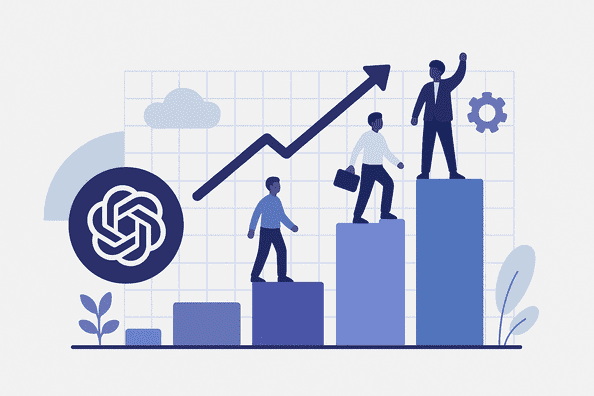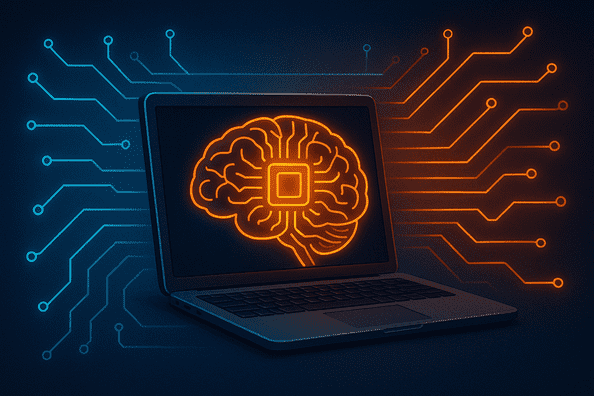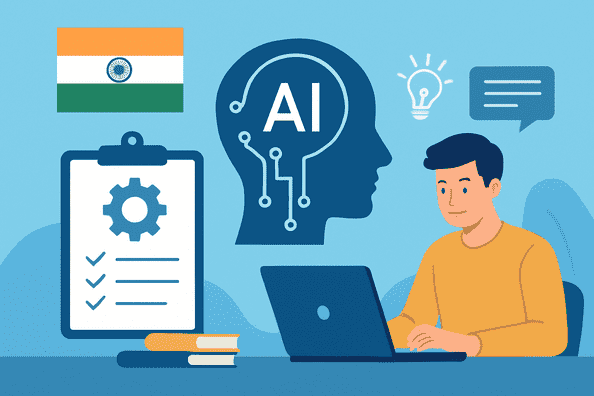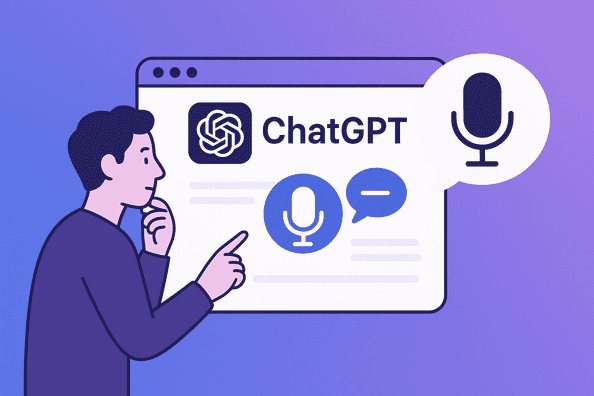The OpenAI growth timeline 2025 represents one of the most extraordinary journeys in tech history, transforming from a small research lab to a $300 billion AI powerhouse in just a decade. What began as a nonprofit with lofty ideals about democratizing artificial intelligence has evolved into the company behind revolutionary products like ChatGPT, DALL-E, and Sora that have fundamentally changed how we interact with technology. This meteoric rise hasn’t happened by accident – it’s the result of strategic pivots, breakthrough innovations, and powerful partnerships that have positioned OpenAI at the forefront of the AI revolution.
As we examine OpenAI’s trajectory through 2025, we’ll uncover the key milestones, strategic decisions, and technological breakthroughs that have fueled its unprecedented growth. From its humble beginnings to its current status as an AI titan with projected revenues of $12.7 billion in 2025, OpenAI’s story offers valuable insights into the evolution of artificial intelligence and its increasing integration into our daily lives.
Table of Contents
- The Birth of OpenAI: A Vision for Safe AI
- Early Years: Building the Foundation (2016-2018)
- The Pivot: From Nonprofit to “Capped-Profit” (2019)
- The Microsoft Partnership: A Game-Changing Alliance
- The ChatGPT Revolution: Changing the AI Landscape
- OpenAI’s Business Model Explained: How the AI Giant Makes Money
- Financial Growth: OpenAI’s Revenue Explosion
- The 2023 Leadership Crisis: Testing OpenAI’s Resilience
- OpenAI in 2025: Current State and Market Position
- The Future Roadmap: OpenAI’s Vision Beyond 2025
- Competitors and Challenges: The Evolving AI Landscape
- Conclusion: Lessons from the OpenAI Growth Timeline 2025
The Birth of OpenAI: A Vision for Safe AI
OpenAI’s story began in December 2015, when a group of tech visionaries including Elon Musk, Sam Altman, Greg Brockman, Ilya Sutskever, and John Schulman came together with a shared concern about the potential risks of advanced artificial intelligence. Their founding mission wasn’t primarily commercial – it was to ensure that artificial general intelligence (AGI) would benefit all of humanity rather than being controlled by a few powerful entities. This idealistic vision led to the establishment of OpenAI as a nonprofit research laboratory committed to developing safe AI in a transparent and collaborative manner.
The founding team pledged over $1 billion in funding, demonstrating their serious commitment to this mission. From the beginning, OpenAI emphasized openness and transparency, promising to share research findings and collaborate with other institutions. This approach was revolutionary at a time when most AI research was happening behind closed doors at large tech companies, with little public visibility into their methods or goals.
Early Years: Building the Foundation (2016-2018)
OpenAI’s first major release came in 2016 with OpenAI Gym, a toolkit for developing and comparing reinforcement learning algorithms. This platform allowed researchers to test and benchmark their AI models in controlled environments, accelerating progress in the field. The following year, OpenAI released OpenAI Baselines, a set of high-quality implementations of reinforcement learning algorithms that quickly gained popularity among researchers.
In 2018, OpenAI achieved a significant breakthrough with the introduction of the first Generative Pre-trained Transformer (GPT) model. This neural network, trained on vast amounts of text data, could perform various language tasks like generating text and answering questions. The same year also saw the debut of OpenAI Five, a team of AI agents that could compete against human players in the complex video game Dota 2, demonstrating the potential of reinforcement learning in strategic environments.
During this period, OpenAI was establishing itself as a serious player in AI research, publishing influential papers and developing tools that would form the foundation for its later commercial success. However, the organization was still primarily focused on research rather than product development, with its work largely funded by donations and grants.
The Pivot: From Nonprofit to “Capped-Profit” (2019)
A pivotal moment in the OpenAI growth timeline 2025 came in March 2019, when the organization announced a significant structural change. OpenAI transitioned from a pure nonprofit to a “capped-profit” model under a new entity called OpenAI LP. This hybrid structure was designed to attract the investment needed for increasingly expensive AI research while maintaining alignment with the original mission.
Under this model, investors could receive returns of up to 100 times their investment, but beyond that cap, all profits would flow back to the original nonprofit entity, OpenAI Inc. This unusual structure reflected the organization’s attempt to balance commercial viability with its mission-driven origins. The change also coincided with Elon Musk’s departure from the board, citing potential conflicts of interest with Tesla’s AI development.
The transition marked OpenAI’s recognition that achieving its ambitious goals would require resources beyond what traditional nonprofit funding could provide. It also signaled a shift toward more commercially oriented research and development, setting the stage for the partnership with Microsoft that would follow.
The Microsoft Partnership: A Game-Changing Alliance
In July 2019, OpenAI formed what would become one of the most consequential partnerships in AI history, securing a $1 billion investment from Microsoft. This alliance went far beyond mere funding – it was a strategic collaboration that would shape both companies’ futures. Under the agreement, Microsoft became OpenAI’s exclusive cloud provider, with OpenAI committing to run its services on Microsoft’s Azure platform.
The partnership had three key components: joint development of new Azure AI supercomputing technologies, OpenAI’s migration to Azure for its AI services, and Microsoft becoming OpenAI’s preferred partner for commercializing new AI technologies. This arrangement gave OpenAI access to Microsoft’s vast computing resources, essential for training increasingly sophisticated AI models.
By 2025, this partnership had evolved significantly, with Microsoft investing additional billions and integrating OpenAI’s technologies into its products. The collaboration remained strong through 2030, with both companies benefiting from revenue-sharing arrangements and Microsoft maintaining significant influence as a major investor. This alliance proved crucial to OpenAI’s ability to develop and deploy advanced AI systems at scale.
The ChatGPT Revolution: Changing the AI Landscape
The most transformative moment in the OpenAI growth timeline 2025 came in November 2022 with the release of ChatGPT. Based on GPT-3.5, this conversational AI system quickly became the fastest-growing consumer application in history, reaching 100 million users within just two months of its launch. ChatGPT’s ability to generate human-like text, answer questions, write code, and perform various creative tasks captured the public imagination in unprecedented ways.
ChatGPT’s explosive popularity catapulted OpenAI from a respected research lab to a household name virtually overnight. The timing was perfect – after years of incremental advances in AI, ChatGPT demonstrated capabilities that felt genuinely revolutionary to everyday users. It wasn’t just a technical achievement; it was a product that millions of people found immediately useful in their daily lives.
The success of ChatGPT led OpenAI to launch ChatGPT Plus, a subscription service offering premium features and priority access. This marked OpenAI’s first major direct-to-consumer revenue stream, complementing its existing API business. By 2025, ChatGPT had evolved through multiple iterations and remained OpenAI’s flagship product, with over 500 million weekly active users across its free and paid tiers.
OpenAI’s Business Model Explained: How the AI Giant Makes Money
OpenAI’s business model has evolved significantly since its founding, transforming from a purely research-focused nonprofit to a sophisticated commercial operation. At its core, OpenAI combines cutting-edge AI research with practical applications that generate revenue while advancing its mission. This dual focus has allowed the company to fund increasingly ambitious research while building sustainable revenue streams.
By 2025, OpenAI’s revenue generation primarily comes from three main sources. First, its API business allows developers and companies to integrate OpenAI’s models into their applications, with pricing based on usage metrics like tokens processed. Second, subscription services like ChatGPT Plus, Team, and Enterprise provide enhanced features for individual and business users. Third, licensing agreements with partners like Microsoft generate significant revenue through royalties and technology access fees.
OpenAI’s customer segments span researchers, enterprises, developers, and government organizations, each with distinct needs and value propositions. For enterprises, OpenAI offers tools that enhance productivity and automate workflows. For developers, it provides the building blocks to create intelligent applications. This diversified approach has enabled OpenAI to build a resilient business while maintaining its focus on advancing artificial general intelligence.
Financial Growth: OpenAI’s Revenue Explosion
The OpenAI growth timeline 2025 reveals one of the most remarkable financial trajectories in business history. From generating just $3.5 million in revenue in 2020, OpenAI has projected revenues of $12.7 billion in 2025 – representing a staggering 3,628x increase in just five years. This exponential growth accelerated dramatically after the launch of ChatGPT, which transformed OpenAI from a research-focused organization into a commercial powerhouse.
By June 2025, OpenAI had reached $10 billion in annual recurring revenue, excluding licensing income from Microsoft and large one-time deals. This figure nearly doubled from the $5.5 billion reported in December 2024, demonstrating the company’s continued momentum. The rapid revenue growth has been driven by widespread adoption of ChatGPT across consumer and business markets, with the company reporting 3 million paying business users by early 2025.
Despite this impressive revenue growth, OpenAI continues to operate at a loss, spending heavily on research and computing infrastructure. The company reportedly lost about $5 billion in 2024 and doesn’t expect to become cash-flow positive until 2029. This long-term approach reflects OpenAI’s commitment to advancing AI capabilities even at the expense of short-term profitability.
The 2023 Leadership Crisis: Testing OpenAI’s Resilience
In November 2023, OpenAI faced its most significant internal crisis when CEO Sam Altman was briefly dismissed by the board of directors, who cited concerns about his candor in communications. This shocking development triggered immediate turmoil, with president Greg Brockman resigning in solidarity with Altman. The crisis escalated when Microsoft quickly hired both executives, raising questions about OpenAI’s future.
The situation reached a dramatic climax when approximately 500 of OpenAI’s employees – nearly the entire staff – threatened to quit if the board didn’t resign and reinstate Altman. This unprecedented show of support for Altman, combined with pressure from major investors like Microsoft, led to a rapid resolution. Just five days after his dismissal, Altman returned as CEO with a restructured board of directors.
This leadership crisis revealed both vulnerabilities and strengths in OpenAI’s governance structure. While the initial board decision exposed tensions between commercial interests and the organization’s original mission, the swift resolution demonstrated the company’s resilience and the strong loyalty Altman had cultivated among employees. The episode ultimately strengthened Altman’s position and accelerated governance reforms that would support OpenAI’s continued growth.
OpenAI in 2025: Current State and Market Position
By 2025, OpenAI has established itself as the undisputed leader in generative AI, with a valuation of $300 billion following a record-breaking $40 billion funding round led by SoftBank. This valuation places OpenAI among the most valuable private companies globally, behind only SpaceX and on par with ByteDance. The company’s workforce has grown to approximately 500 employees, a relatively small team given its outsized impact and valuation.
OpenAI’s product portfolio has expanded significantly, anchored by its GPT models and their applications. ChatGPT remains the flagship consumer product, now enhanced with multimodal capabilities including voice, image, and video processing. For businesses, OpenAI offers various subscription tiers and API access, with features tailored to enterprise needs like data security, compliance, and integration capabilities.
In the competitive landscape, OpenAI maintains an estimated 17% market share in the generative AI software and services market. While facing growing competition from rivals like Google DeepMind, Anthropic, and Cohere, OpenAI’s first-mover advantage, technical expertise, and strategic partnerships have helped maintain its leadership position. The company’s continued focus on advancing toward artificial general intelligence (AGI) differentiates it from competitors with more narrow commercial objectives.
The Future Roadmap: OpenAI’s Vision Beyond 2025
Looking beyond 2025, OpenAI’s roadmap focuses on several key strategic priorities that will shape the next phase of the OpenAI growth timeline 2025. At the core of this vision is the continued pursuit of artificial general intelligence (AGI) – AI systems with human-level capabilities across a wide range of tasks. OpenAI remains committed to ensuring that AGI benefits all of humanity, maintaining this founding principle even as the organization has evolved commercially.
A central element of OpenAI’s future strategy is the unification of its AI technologies into more integrated systems. The upcoming GPT-5, expected to launch in late May 2025, represents a significant step in this direction, combining multiple capabilities including advanced reasoning, multimodal processing, and improved contextual understanding into a single model. This approach aims to eliminate the need for users to switch between different specialized models for different tasks.
OpenAI is also investing heavily in enhancing its infrastructure through projects like Stargate, a joint venture with SoftBank and Oracle announced in early 2025. This initiative will significantly expand OpenAI’s computing capacity, enabling the training of increasingly sophisticated models. On the business side, OpenAI projects its revenue to reach $29.4 billion in 2026 and surpass $125 billion by 2029, reflecting ambitious growth targets that will require continued innovation and market expansion.
Competitors and Challenges: The Evolving AI Landscape
As OpenAI continues its remarkable growth trajectory, it faces an increasingly competitive landscape populated by both established tech giants and well-funded startups. Google DeepMind remains a formidable competitor, leveraging its research prowess and parent company’s resources to develop advanced AI systems like AlphaFold. Anthropic, founded by former OpenAI researchers, has gained significant traction with its Claude AI assistant, which emphasizes safety and ethical considerations.
Other notable competitors include Cohere, specializing in natural language processing with an API-first approach; Stability AI, known for open-source models like Stable Diffusion; and Microsoft’s own Azure AI, which benefits from its partnership with OpenAI while developing complementary technologies. This competitive environment pushes OpenAI to maintain its innovative edge while addressing challenges related to model performance, safety, and commercial viability.
Beyond competition, OpenAI faces several significant challenges that could impact its future growth. These include managing the enormous computing costs associated with training and running advanced AI models, navigating complex regulatory environments across different jurisdictions, addressing concerns about AI safety and misuse, and balancing commercial objectives with its original mission. How OpenAI navigates these challenges will be crucial to maintaining its leadership position in the rapidly evolving AI landscape.
Conclusion: Lessons from the OpenAI Growth Timeline 2025
The OpenAI growth timeline 2025 offers a fascinating case study in how a mission-driven organization can achieve extraordinary commercial success while pursuing ambitious technological goals. From its founding as a nonprofit research lab to its current status as a $300 billion AI powerhouse, OpenAI has demonstrated that idealism and business acumen can coexist and even reinforce each other when guided by strong leadership and clear vision.
Several key factors have contributed to OpenAI’s success. First, its strategic pivot from a pure nonprofit to a “capped-profit” model enabled it to attract the investment needed for increasingly expensive AI research. Second, the partnership with Microsoft provided crucial computing resources and commercial pathways. Third, the launch of ChatGPT represented perfect timing – introducing a revolutionary product just as the market was ready to embrace generative AI.
As we look to the future, OpenAI’s continued success will depend on its ability to maintain technological leadership, navigate competitive pressures, manage regulatory challenges, and balance commercial objectives with its founding mission. The company’s journey offers valuable lessons for other organizations seeking to harness cutting-edge technology for both profit and purpose. Whatever the future holds, the OpenAI growth timeline 2025 has already secured its place as one of the most remarkable business and technological stories of our time.



